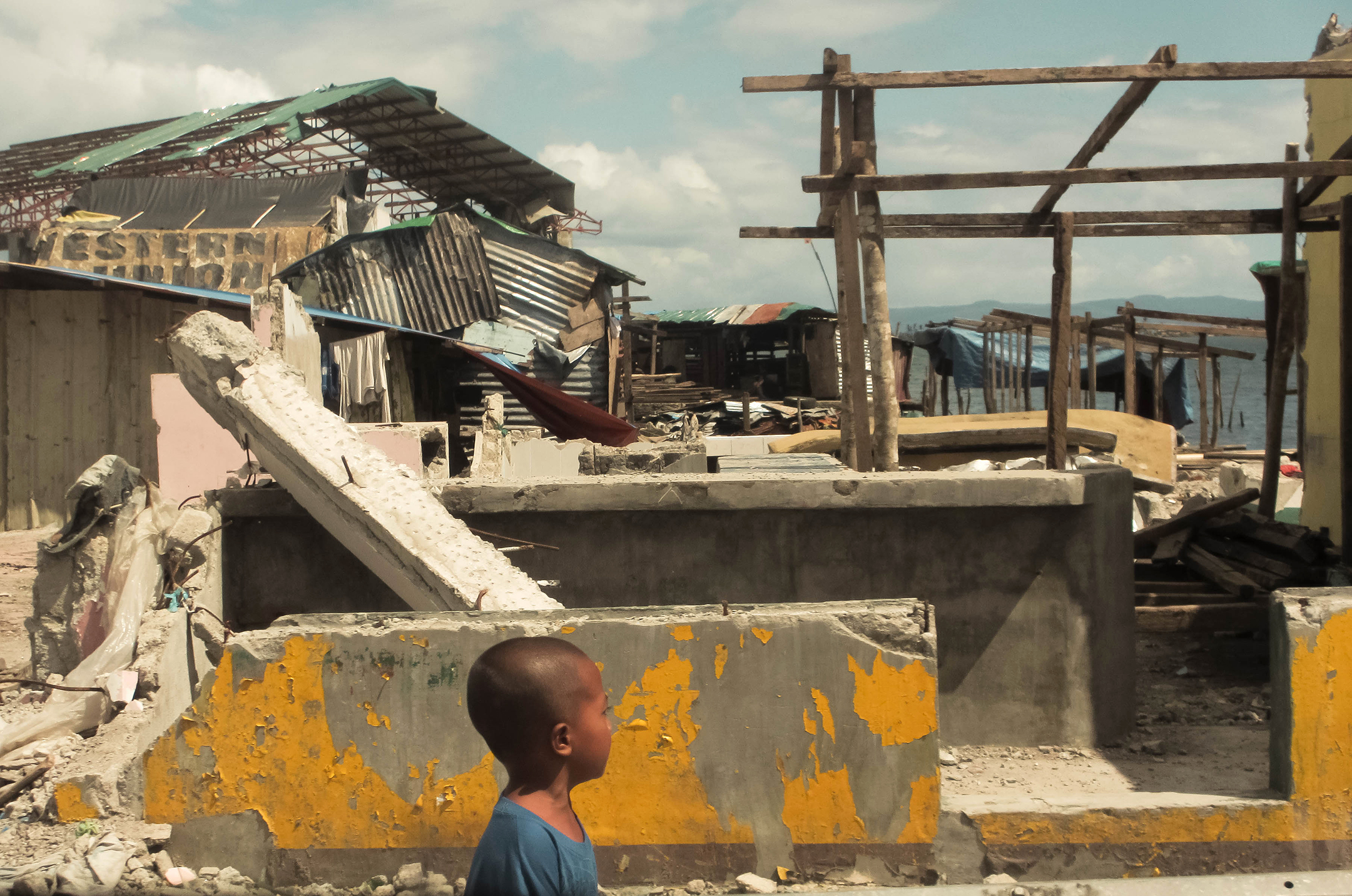Philippines: Post-typhoon Resettlement Plan Carries Risks

In November 2013, the strongest typhoon on record tore a path of destruction across the central Philippines, displacing four million people. In the disaster’s wake, the government adopted an ambitious plan to relocate 200,000 households away from at-risk coastal areas and resettle them out of harm’s way.
While well-intentioned as a strategy to mitigate displacement from future typhoons and climate change, observations to date suggest that without sufficient planning and safeguards, government-led resettlement is a highly risky undertaking that threatens to prolong displacement and leave affected populations more, not less, vulnerable.

On November 8, 2013, Typhoon Haiyan (locally known as Yolanda) struck the central Philippines. With sustained winds of 195 miles per hour, the storm was the strongest on record and affected 14 million people across nine regions. Most heavily affected were the Eastern Visayan Islands of Samar and Leyte, where the typhoon first made landfall, bringing with it a 15- to 19-foot storm surge that submerged thousands of miles of coastline.
The destruction caused by the storm was enormous. More than 6,000 people were killed and 1.1 million homes were damaged or destroyed, displacing some four million people. The storm also had devastating and long-term impacts on the livelihoods of close to six million workers, 2.6 million of whom were already living at or near the poverty line. The co- conut industry, a leading economic sector in affected areas that supported a million farming households, was particularly hard hit with the loss of more than 33 million coconut trees. It will take nearly a decade for these trees to grow back. The storm also had major impacts on the fishing industry. Boats and fishing equipment were lost and vital fish habitats like mangroves and coral reefs were destroyed, thereby affecting more than 60 percent of fishing communities.

Facing the enormous destruction and mindful of the country’s high susceptibility to typhoons (20 per year on average), shortly after the storm hit, President Aquino instructed municipalities in affected coastal areas of Leyte and Samar to enforce “no build zones” (NBZs) in all areas within 40 meters (120 feet) of the high water mark. According to the policy, rebuilding would be allowed within NBZs for livelihood and commercial purposes but not for residential dwellings. The government further announced that it would implement a re- location and resettlement program for those previously living in these areas.
While perhaps well-intended as a measure to protect people from future typhoons, the NBZ policy and resettlement plans have proven enormously challenging. This is not surprising in light of the scale of the proposed undertaking – an estimated one million people (200,000 households) previously lived in areas subject to the NBZ policy. Refugees International (RI), in its report from a mission undertaken in February 2014 (three months after the typhoon hit), warned that the enforcement of the NBZ policy, in the absence of a well-planned and fully consensual and inclusive resettlement program for those affected, was not only resulting in prolonged displacement of poor, landless families but also contravened national law and international human rights principles regarding the right of displaced people to voluntarily return to their place of habitual residence, as well as prohibitions on forced evictions.
Our Findings and Recommendations
- Resettling populations as a strategy to mitigate displacement from disasters is a complex process that requires substantial advance planning and resources on both the national and local level. Without sufficient planning and safeguards, policies that restrict the right of displaced populations to return pending resettlement are likely to prolong displacement, infringe on displaced persons’ legal and human rights, and increase their vulnerability.
- Governments wishing to undertake post-disaster resettlement must have in place national legal frameworks that protect the rights of those affected. They must also establish institutional arrangements for implementing resettlement that include clearly articulated roles and responsibilities between central, provincial, and local authorities.
- Where governments decide to resettle displaced people in the aftermath of disasters, international humanitarian agencies engaged in disaster response must put in place transitional shelter and protection strategies to protect internally displaced people during the resettlement process, and work with government counter-parts and development agencies to implement them.
- In post-disaster contexts, both governments and international humanitarian and development agencies must collaborate to develop more inclusive, innovative, and flexible shelter/resettlement responses that go beyond physically relocating people to empty plots of land.
Alice Thomas traveled to the Philippine islands of Leyte and Samar to assess the humanitarian response to Typhoon Haiyan in February and November 2014. She interviewed affected individuals, Philippine and donor government officials, UN officials, and representatives of the International Red Cross and Red Crescent Movement, international non-government organizations, and local civil society organizations.